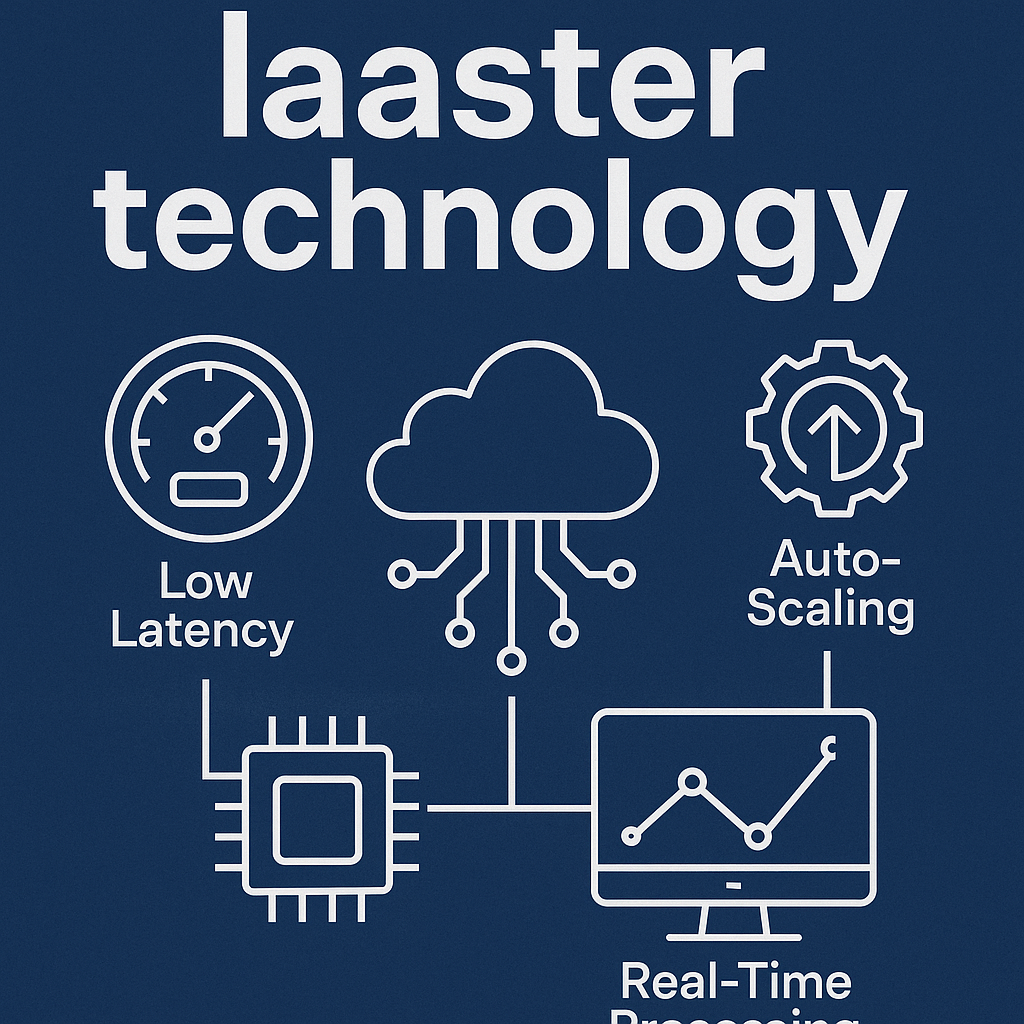Introduction to laaster
In an period where collaboration instruments, efficiency stages, and particular systems multiply, one title that’s begun producing buzz is Laaster. Whether you’re a inventive proficient, a group lead, or a commerce assessing your tech stack, understanding whether Laaster genuinely lives up to its guarantee is critical. This article offers a profound jump into Laaster, investigating what it is, its major qualities and shortcomings, and whether it’s truly worth the speculation in 2025.
What Is Laaster?
Laaster is referred to in various sources as an ecosystem or system with the emphasis on cooperation, real-time communication, and productivity. Some of the major descriptions are:
-
A cloud capacity, group communication, record sharing, assignment and workflow administration efficiency environment.
-
A multimedia/interactive-storytelling stage highlighting drag-and-drop capabilities, real-time collaboration, and analytics.
-
A more technical framework with a focus on low latency, real-time processing, edge computing and smart routing.
With this in intellect, it is conceivable to see at Laaster as a crossover: in portion a collaboration/productivity device for groups, in portion a content- creation/interactive instrument for makers, and in portion a innovation stack/approach for real-time frameworks. The right situating as a rule pivots on your utilize case.

Key Features and Value Proposition
Let’s examine what Laaster brings to the table what you gain if you decide to adopt it.
| Feature | What It Offers | Value to You |
|---|---|---|
| Unified workspace | Shared workspaces for files, chat, tasks, co-editing. | Reduces tool-sprawl; everything in one place. |
| Real-time collaboration | Editors can work simultaneously, live updates, annotations, feedback loops. | Better team synergy; faster turnarounds. |
| Workflow automation & integrations | Auto-assignment, triggers, connectors to external apps. | Saves time; less manual busy-work. |
| Interactive content & storytelling tools | Embed images, videos, quizzes, animations; branchable stories. | Useful if your work involves creative content or marketing. |
| Low-latency, scalable architecture (tech side) | Fast response, edge computing, optimized routing. | Relevant if you require high-performance, real-time interaction. |
| Security & compliance | Role-based access, version control, encrypted data, compliance-ready. | Important for sensitive industries or regulated data. |
In brief: Laaster is set to provide a contemporary collaboration/creation platform that caters to remote/distributed teams, creative processes, and potentially performance-sensitive applications. With good use of these features, considerable value can be delivered.
Advantages of Utilizing Laaster
Following are the strengths and where Laaster can actually excel.
-
Centralising instruments & information: If your group as of now works with parts of standalone apps (record sharing, chat, venture following, input circles), making the switch to Laaster can offer assistance solidify them and cut down on friction.
-
Increased collaboration and pace: The capacity to alter and explain in real- time, particularly for inventive or plan groups, is a colossal additionally. As one article clarifies: “Laaster separates itself … by permitting creatives to explain specifically on pictures and plans in genuine time.
-
Increased efficiency by means of computerization: Computerizing monotonous assignments and optimizing workflows, Laaster can discharge your group to work on higher-level tasks.
-
Effortless versatility for remote/hybrid groups: With cloud workspace, device-independent get to, and offline bolster, it obliges adaptable working courses of action
-
Enhanced security and governance (with the correct plan): With version control, access roles, encryption and backup, Laaster can be a solid solution for business use in addition to casual teams.
-
Potential for interactive & creative content: If your work involves storytelling, marketing, interactive experience, Laaster’s multimedia capabilities offer you more than simple document sharing.
Cons & Things to Monitor
No platform is ideal.. Here are the drawbacks or caveats you should consider.
-
Steep learning curve? While Laaster may be user-friendly, the breadth of features means that teams might need time to learn it and adapt workflows. If your team is used to simpler tools, there may be friction.
-
Cost vs. need: If you’re a small team or only need basic file sharing or chat, using a full-featured platform like Laaster may be overkill in terms of cost and complexity.
-
Performance or connectivity issues: For teams with older hardware or slower internet connections, rich real-time features might lag or degrade the experience.
-
Feature overload / under-utilisation risk: Some organisations may only use a small subset of the features but still pay for full access — making cost-effectiveness lower.
-
Integration and migration effort: Moving from existing tools to Laaster will involve migrating data, training users, and changing workflows — which has hidden time and cost implications.
-
Vendor lock-in and dependency: If you build heavily on Laaster’s specific workflows or interactive content, moving away later might be difficult.
-
Niche vs. mainstream awareness: Depending on your industry and region, Laaster might not yet have the maturity or ecosystem of more established platforms — support, add-ons, and community may be less developed.
Table: Who Should Use Laaster (and Who Might Not)
Here’s a quick decision table.
| Use Case | Good fit? | Why/Why Not |
|---|---|---|
| Small solo user needing only file sharing & chat | Maybe not | Too many features, likely cost-inefficient. |
| Small creative studio (design, marketing) collaborating remotely | Good fit | Real-time feedback, annotation, unified workspace beneficial. |
| Mid-sized team managing multiple concurrent projects across departments | Strong fit | Workflow, automation, collaboration, analytics are relevant. |
| Enterprise with highly sensitive data, many integrations, compliance needs | Potential fit | If the enterprise plan supports necessary scale/permissions — but evaluate carefully. |
| Teams with very simple workflows, limited budget, legacy hardware/internet | Poor fit | Performance and complexity may outweigh benefits; cheaper/simpler tool may suffice. |
Honest Opinion: Is Laaster Worth It in 2025?
Yes but only if your context justifies it.
If you represent a team that struggles with scattered tools, mis-communication, slow feedback loops, or remote collaboration fatigue Laaster can help solve many of those pain points. The productivity gains, centralisation, and creative collaboration features can make a meaningful difference.
On the other hand, if your needs are modest, your budget is tight, or your team is comfortable with current tools and workflows adopting Laaster might feel like choosing a sledgehammer to crack a nut. You might pay for features you never use.
In 2025, when remote/hybrid work is ubiquitous and competition among teams is tougher, having better collaboration and workflow tools gives an edge. So from a strategic viewpoint, investing in a platform like Laaster can be forward-looking. Just ensure you perform a clear cost vs benefit analysis, pilot it with your team, and verify that your hardware/internet environment supports its features.

FAQs
-
Is Laaster suitable for freelancers or only teams?
Laaster works for both, but the major benefits (workspaces, collaboration, automation) shine when multiple users are involved. If you’re alone, a simpler tool may suffice. -
Does this integrate with other popular tools?
Yes — according to descriptions, it supports workflow automations and integrations with tools like Slack, Zoom, Google Drive, etc. -
Can I try this before committing?
Many reviews mention a free or trial version for basic features (though you should check current pricing and plan details in your region). -
Is Laaster good for highly creative teams (design, video, multimedia)?
Yes — one article highlights that for creatives, the annotation, image/video feedback, real-time shared boards are a strong fit. -
What about performance and connectivity—will it work with slower internet or older devices?
While Laaster emphasises real-time and interactive features, performance may degrade on older hardware or unreliable internet. It’s prudent to test in your actual environment before full rollout.
Conclusion
In rundown: it is worth it, if your group or association needs more than fair essential collaboration apparatuses and is prepared to grasp a more coordinates, feature-rich environment. It can open way better efficiency, quicker workflows, inventive collaboration and centralised data.
However, if your needs are negligible or your budget compelled, you ought to continue cautiously assess whether the included complexity and taken a toll convey commensurate value.
Before you commit, do these three things:
-
Pilot it with a important group on a few projects.
-
Map your current torment focuses and gauge the time/money you spend due to inefficiencies.
-
Check foundation status (web speed, equipment, client encounter) and integration/migration must-haves.
If after doing this, the benefits exceed fetched and disturbance, at that point yes it is a savvy venture in 2025. If not, hold up or select a easier instrument.

